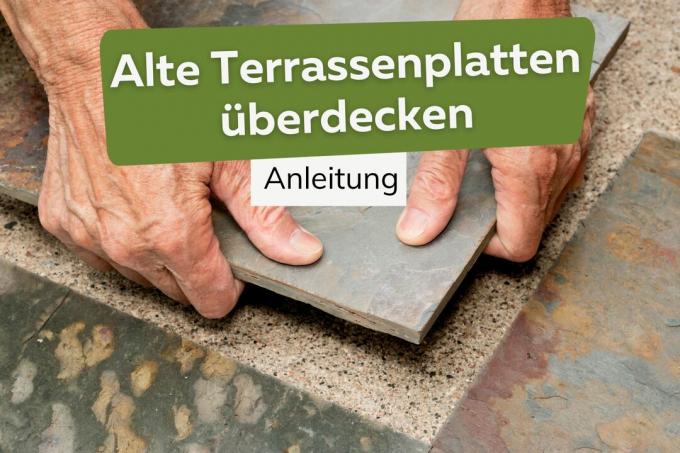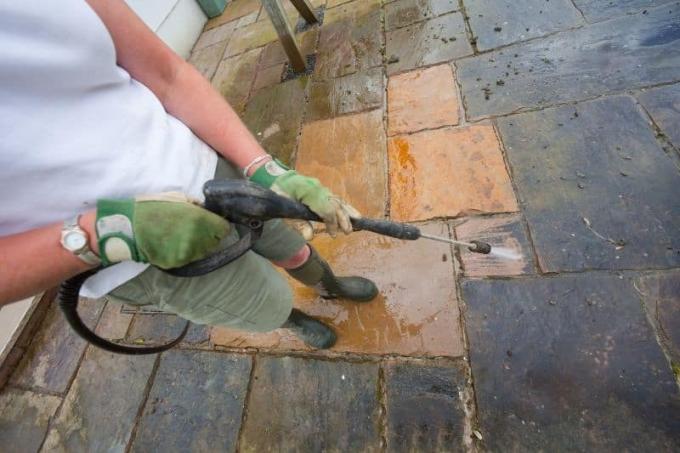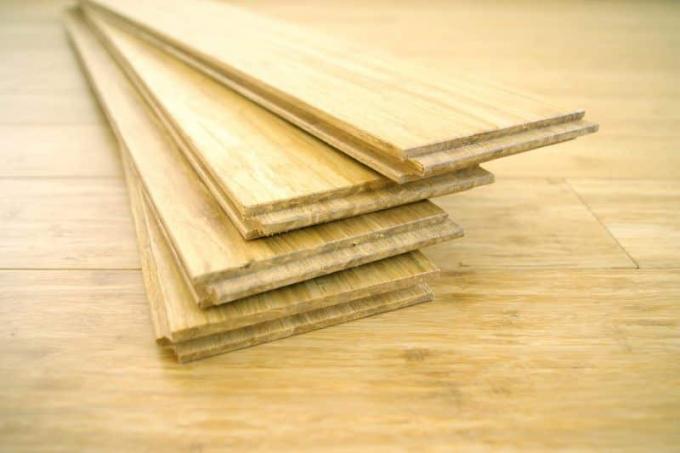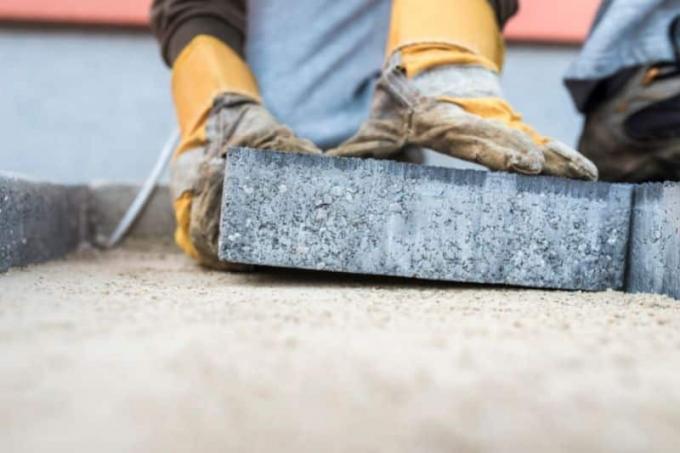
If you want to give your terrace a new look, you don't have to remove the existing one. There are ways to effectively and attractively cover old patio slabs and use them as a base.
In a nutshell
- flat terrace necessary
- thoroughly pre-clean
- fixed or floating
Table of contents
- Preparation
- Lay patio tiles
- Use click system
- Alternative: patio tiles
- pave the terrace
- Cover terrace slabs: conclusion
- frequently asked Questions
Preparation
Covering old patio tiles is not difficult. Good preparation is important for this project so that the new covering sits well and does not slip. For this reason, you should check in advance whether the previous terrace is level. This is important because otherwise the "new" terrace will shift or the covering elements will not be applied exactly. It is also important that the old terrace already has the necessary gradient of two to three percent, otherwise rain and melt water will not run off. If the terrace meets these requirements, you can start preparing:
- old Clean patio tiles
- use a high-pressure cleaner
- let dry
- remove weeds
- replace damaged plates

A notice: You should not cover loosely laid patio tiles again. The plates could move much faster due to the weight of the new surface.
Lay patio tiles
terrace slabs are easier to lay on old slabs if you use decking pads. Depending on the model, terrace supports are screwed to the old terrace or placed floating. They can be adjusted to the required height at will. As a result, gradients do not pose a problem for the new surface. For one square meter you need between 3 and 5 pedestals so that the terrace slabs can be precisely adjusted and there are no weak points. They are moved as follows:
- Set up terrace supports at the corners of the slab
- Depending on the version, screw it down or use it floating
- lay from a corner
- Place terrace slabs on a support with each corner
- repeat until entire area is covered
- Optimize joint width using spacers
- ideally between 3 and 5 mm joint width
- Adapt patio edging to new patio

Since you lay the terrace slabs floating, the implementation is somewhat cheaper than a permanently installed variant. Nevertheless, you have to plan around 60 to 120 euros per square meter.
A notice: You can also build a classic wooden terrace over the terrace slabs. Since there is already a foundation for the new terrace, you can get started right away.
Use click system
Floating click systems are probably the simplest methods of covering old terrace tiles. These systems consist of click planks or tiles made from weatherproof materials such as WPC, which are available in a variety of colors and textures. When using a click system, floating floors are usually used, which are fixed with a border. The border usually consists of a simple wooden frame or curbs, depending on your taste. Click systems are available either in the form of planks or tiles. They are moved in the following way:
- start in a corner
- insert the following click tiles or planks into each other
- either offset or at a 90° angle
- Saw off excess

A click terrace covering will cost you between 12 and 45 euros per square meter, which makes this variant the cheapest.
Note: Depending on the terrace slope and weather conditions, it is advisable to lay a drainage film under the click elements. It enables significantly better water drainage.
Alternative: patio tiles
Terrace tiles are just as easy to lay, but not floating. These are not click tiles, but similar to the terrace slabs, tiles that are "installed" permanently. This means that you have to proceed differently with these as already explained. Terrace tiles made of different materials such as natural stone and concrete are used for this. The following materials and utensils are required for the implementation:
- flexible glue
- tile glue
- decoupling track
- Mixer or drill with mixer attachment
- painting trowel
- grout

After cleaning the terrace, the tiles are laid in the following way:
- Thoroughly apply flexible adhesive to old patio tiles
- lay the decoupling sheet exactly
- they are laid flush
- Mix and apply tile adhesive
- Lay tiles alternately and in a 90 degree design
- pay attention to a joint width of 3 to 5 mm
- after 24 to 30 hours feature
The laying of terrace tiles is usually more expensive than click systems and terrace slabs due to the materials used. You have to calculate around 65 to 200 euros per square meter, depending on the material and the glue used.
pave the terrace
Paving over old terrace slabs is also suitable for giving the terrace a new style. The advantage of this method is the already existing area. This significantly reduces the effort required for implementation, as you do not have to dig and prepare any extra space for the paving stones. You can also use any pavement, which makes choosing stones easier. The advantage: for paving on old terrace slabs you need a mortar bed, which is used as the basis for the paving stones. The instructions detail the steps involved in paving the patio:
- mix mortar
- Apply in a thickness of 5 to 6 centimeters
- insert paving stones
- tap carefully
- fill joints do not forget
- accessible after 27 hours

If you choose a paved terrace, you have to reckon with costs of 50 to 70 euros per square meter. Since no gravel bed is necessary, you save some money.
Cover terrace slabs: conclusion
Which of the methods mentioned is the best depends on your design and usage ideas, as well as the available budget. If you do not want to damage your old terrace or want to permanently bind it with another material, you should use click systems or floating terrace slabs. The implementation saves time and money and the new terrace can be quickly removed again when you no longer want it.
frequently asked Questions
If your patio is made of highly absorbent materials, you should use a primer. This includes, for example, many natural stones, some of which absorb the necessary connecting materials through their pores, which makes it difficult to lay the slabs exactly.
If the old terrace slabs used to have to deal with weeds, you should also use a weed fleece. This is primarily necessary for floating variants. After preparation, cover the old slabs thoroughly with the fleece before laying the new terrace.
That is definitely possible. High-quality artificial turf enables the implementation of a continuous terrace area, which also protects against weeds. If the old terrace is not completely level, a thicker artificial turf variant is recommended to compensate for the height.
